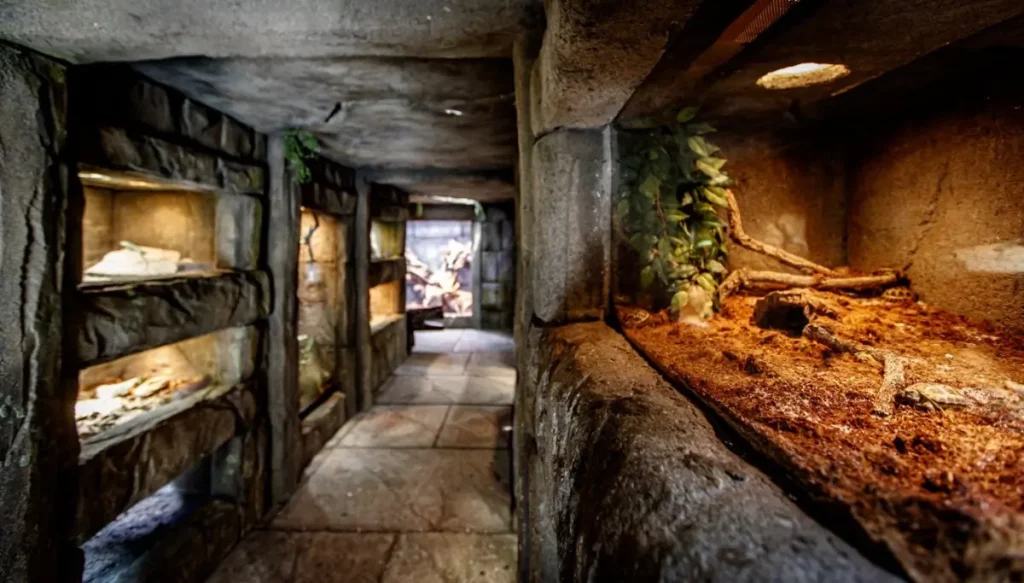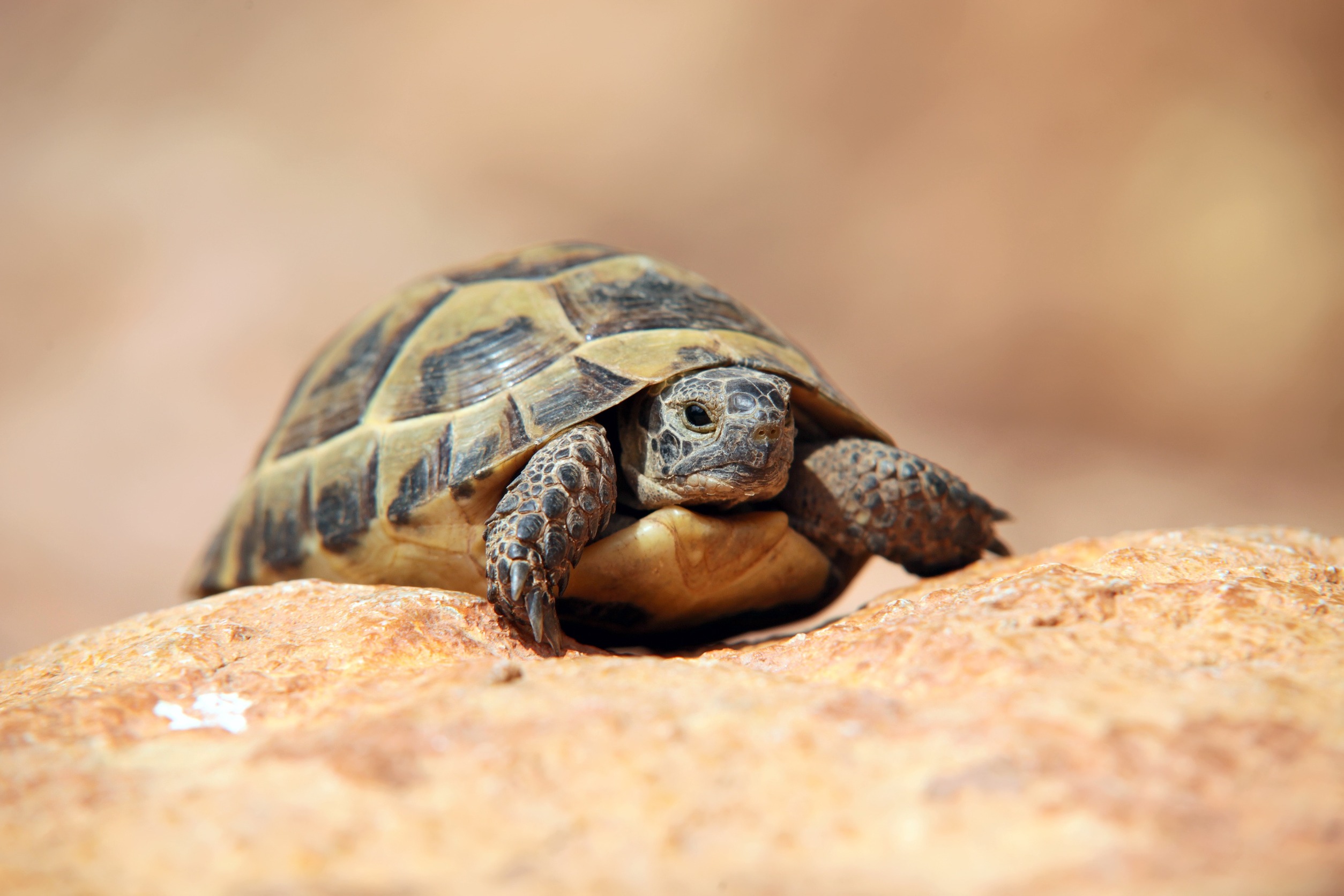Keeping a Tortoise as a Pet
When we think of pets, we often think of wagging or grunting animals, but reptiles do not immediately come to mind. Yet tortoises have recently been gaining popularity as surprisingly fun exotic pets.
Despite their calm appearance, tortoises are very active and curious animals, each with a unique personality. And this makes them fun animals to keep as pets.
Plus, keeping tortoises as pets can be surprisingly easy, as long as you meet their natural needs.
In this blog, discover how you can effortlessly enjoy the company of these fascinating reptiles while meeting their simple but essential requirements.
Which tortoises are suitable as pets?
There are several types of tortoises suitable for keeping as pets. Consider the Russian Fourteen, Greek Tortoise, Box Tortoise and the Coal Burner.
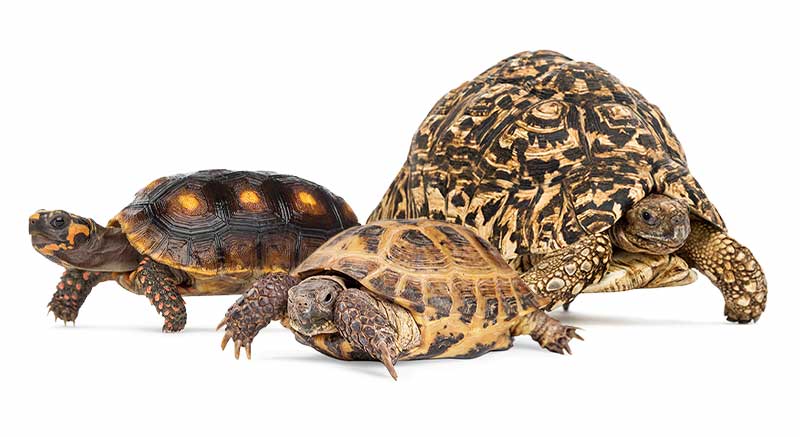
When it comes to choosing a suitable tortoise as a pet, it is important to consider several factors such as size, habitat and care requirements.
As a novice tortoise owner, we recommend that you choose one Russian Four-toed Tortoise.
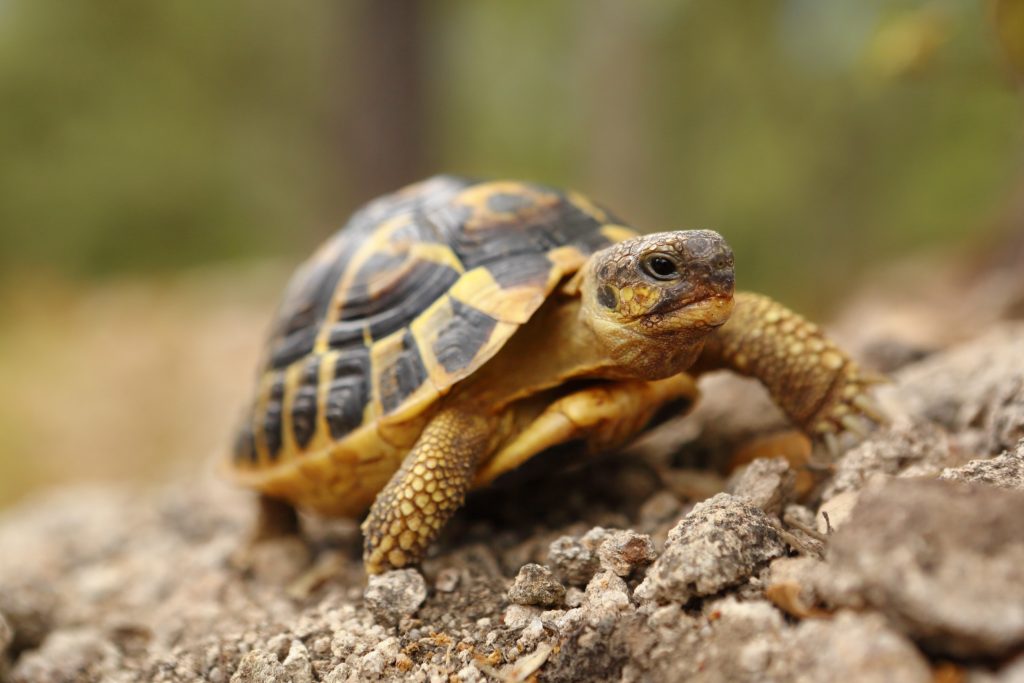
De Russian four-toed tortoise, scientifically known as Testudo horsfieldii, is a popular choice as a pet.
De Russian fourteen is known for its active lifestyle and got its name because of its distinctive four toes.
With a small to medium size, friendly temperament and relatively easy care, this turtle is suitable for beginners.
Housing a Tortoise
Tortoises can be kept indoors or outdoors. To keep your tortoise indoors, a hold is often used terrarium or a special one tortoise table. When determining the size of the enclosure, it is advisable to use at least 6 times the shell length of the tortoise.
For a young turtle you end up in a terrarium of 100x50x50cm and when they are adults 120x50x50cm or even better 150x50x50cm. Remember that tortoises are active animals, so the bigger the better.
Creating a suitable environment is essential, with factors such as temperature, humidity, design and light intensity playing a major role. These vary per tortoise species.
For the Russian Fourteen for example, the ideal conditions are as follows:
- Day temperature: 24 ° - 29 ° C
- Humidity during the day: 40 - 75%
- Night temperature: 18 - 22 ° C
- Humidity at night: 80 - 90%
By maintaining these conditions, you provide a comfortable living environment that meets the specific needs of the Russian Four-toed Tortoise.
Indoor enclosures, such as a terrarium or special turtle table, should be at least 6 times the shell length of the adult turtle. Maintaining the correct temperature and humidity provides a comfortable living environment that satisfies natural needs.
Suitable Living Environment
In addition to the correct temperature and humidity, the furnishings play a crucial role in housing tortoises.
Due to the natural digging behavior of most tortoises, it is advisable to provide a thick substrate of at least 15 cm so that they can exhibit their natural behavior.
Creating a natural environment involves using real plants and sowing different ones seeds beneficial, providing a continuous food source for your turtle.
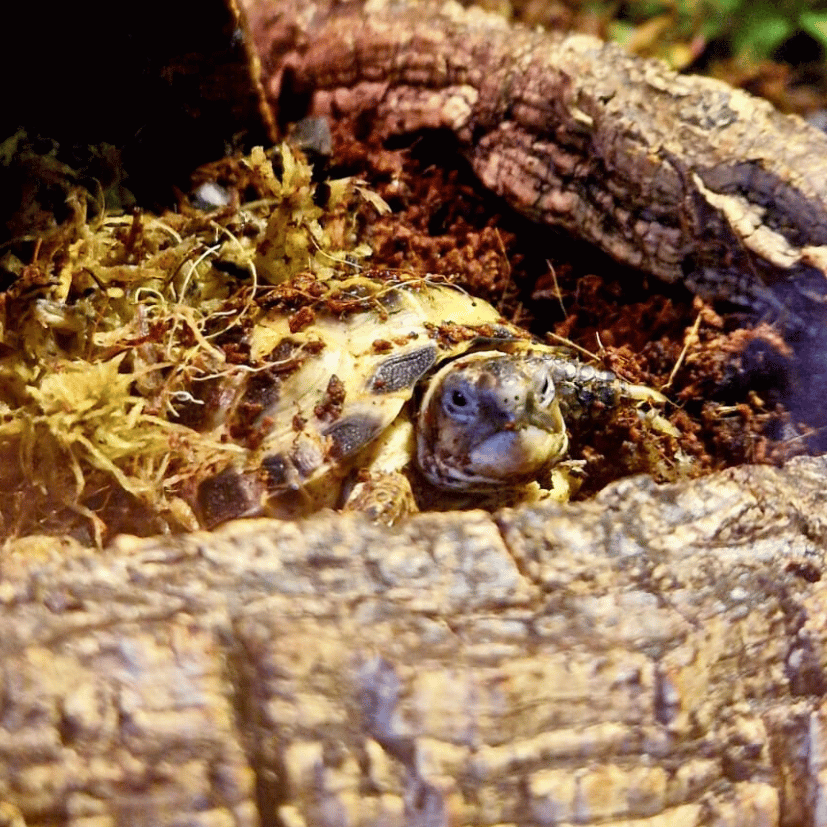
For optimal housing, a thick bottom of at least 15 cm is essential. Create a natural environment with real plants and sown seeds for a supplemental food source.

In the tortoise enclosure it is crucial to create two specific zones:
- One with a thick and moister bottom, perfect for digging activities.
- And one side with a less thick and drier bottom, suitable for sunbathing.
For the digging side, where there is sufficient space and structure for digging and which also retains moisture well, we recommend using a combination of Back Zoo Nature Humus en Back Zoo Nature Bark bed.
The sunbathing side can be less thick, and here you can special reptile sand use to create a drier soil that effectively retains heat.
Besides the fact that tortoises like to live in burrows underground, it is also important to give them access to shelters above ground. This can easily be achieved by using pieces of cork, wood or teakwood, in which your turtle can safely retreat.
From underground burrows to above-ground shelters, tortoises thrive in a balanced environment. Use pieces of cork, wood or teakwood to create safe shelters, securely placed to prevent injuries.
Make sure the hiding places are securely located, and avoid situations where your turtle could get hurt while burrowing. This creates a balanced and safe environment that promotes the natural behavior of your tortoise.
The Importance of Bathing
A shallow water container where your turtle can fit completely is essential!
De water bowl should be shallow enough so that they cannot drown in it and can get in and out easily.
Bathing your tortoise is very important to keep them well hydrated.
Bathing also has a positive effect on their well-being, such as cleaning dirt from the eyes and stimulating intestinal activity.
By offering regular bathing opportunities, you contribute to the health and comfort of your tortoise.

A shallow water bowl is essential for your tortoise, allowing them to bathe safely. This is not only to keep them well hydrated, but also for their well-being, such as cleaning the eyes and stimulating intestinal activity.
What does a tortoise eat?
The natural diet of a tortoise consists of various fiber-rich plants, grasses, herbs and flowers.
To mimic the natural diet in captivity, it is essential to feed them a high fiber diet consisting of a variety of vegetables, flowers and herbs.
You can give vegetables such as endive, bean sprouts, chicory, kale, dandelion, peppers and carrots as basic food.
For a tortoise's healthy and balanced diet, mimicking their natural diet is crucial. This includes fiber-rich plants, grasses, herbs and flowers. Basic food such as endive, bean sprouts, chicory, kale, dandelion, peppers and carrots form the core, supplemented with special turtle food and calcium supplements.
To meet the natural diversity, it is important to supplement the diet with specially formulated turtle food.
Choose a complete diet such as Lucky Reptile Testudo mixes of Arcadia Earth Pro Optimized52 Tortoises.
It is essential to have special calcium supplements and adding sepia to the daily diet to ensure your tortoise gets all the nutrients it needs for a healthy and balanced diet
Can you keep tortoises together?
By nature, tortoises are solitary animals that prefer a solitary life, coming together only for mating purposes. We therefore recommend keeping your tortoise alone.
While it is understandable that we would want to project human emotions onto them, it is essential to understand that turtles do not have the same social needs as humans.
Tortoises are naturally solitary animals that prefer to live alone, so it is highly recommended to keep them individually.
If you do choose to keep tortoises together, consider an all-female group, preferably with more than three females, or one male with several females.
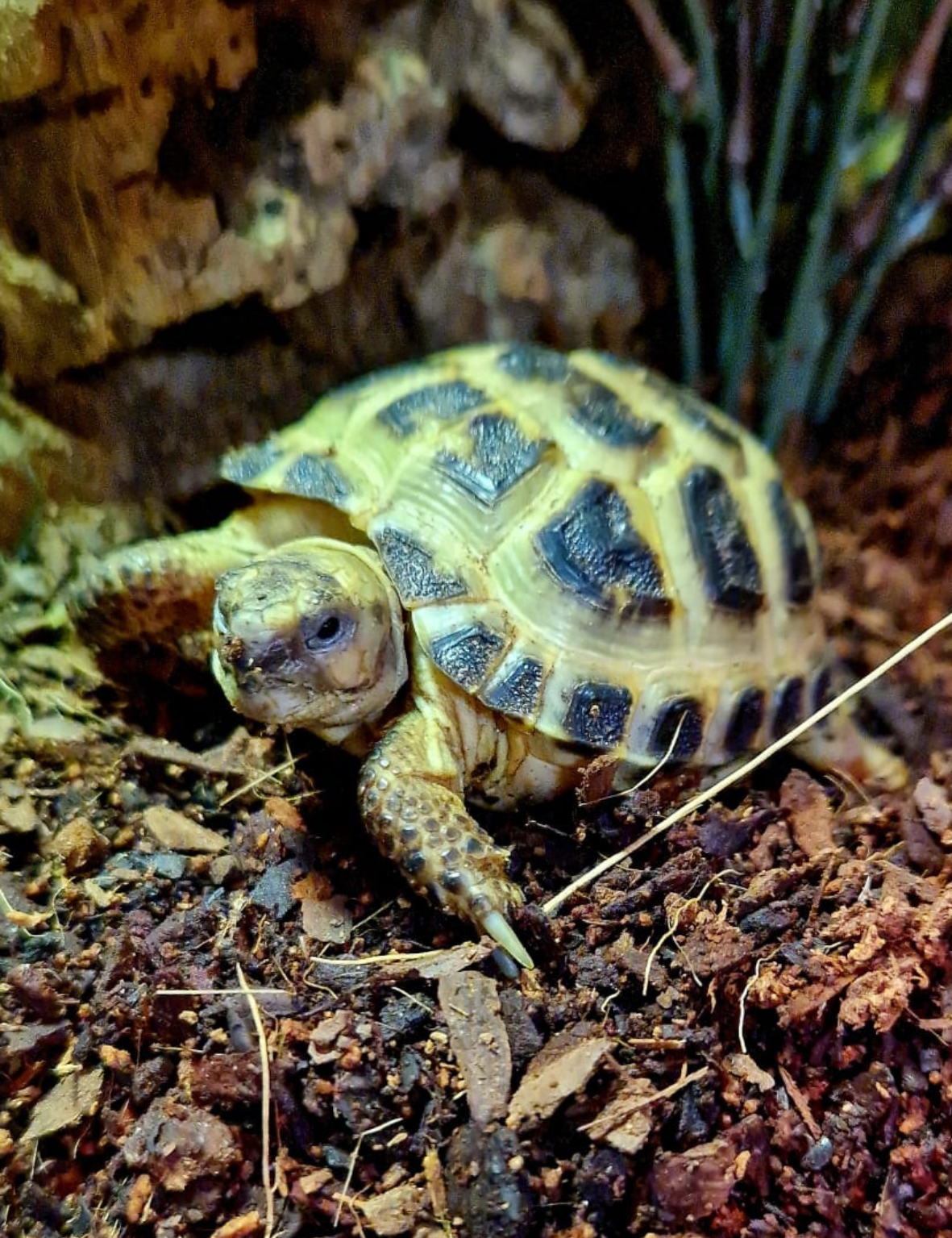
How do you tell the gender of tortoises?
Identifying the gender in tortoises can be challenging, but there are some clues you can follow.
In many species, the male is generally smaller with a slightly concave abdomen, while the female is often larger with a flatter abdomen.
Males also tend to have a longer tail and the cloaca (opening for reproduction and excretion) is located further towards the end of the tail.
In females, the cloaca is closer to the body and hind legs.
Pay attention to these subtle differences and consult an expert if you want to be sure about the gender of your tortoise.
We are happy to help you!
With more than 45 years of expertise, we specialize in exotic pets! And we are ready to advise and guide you in getting started with a tortoise.
